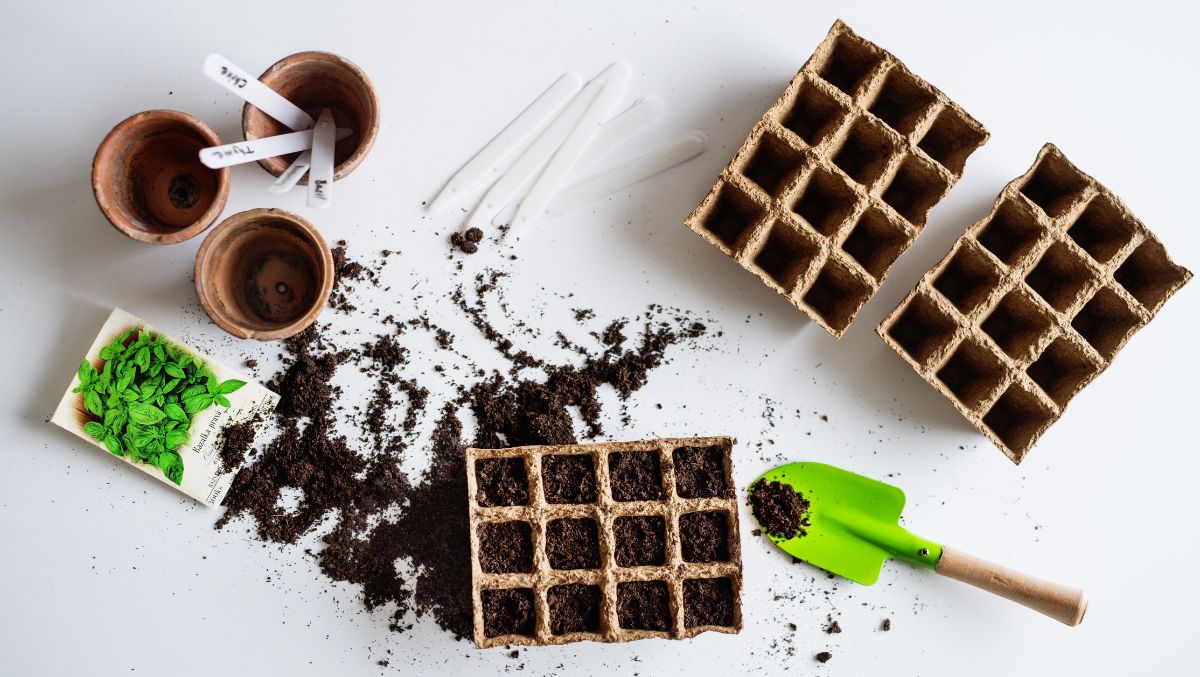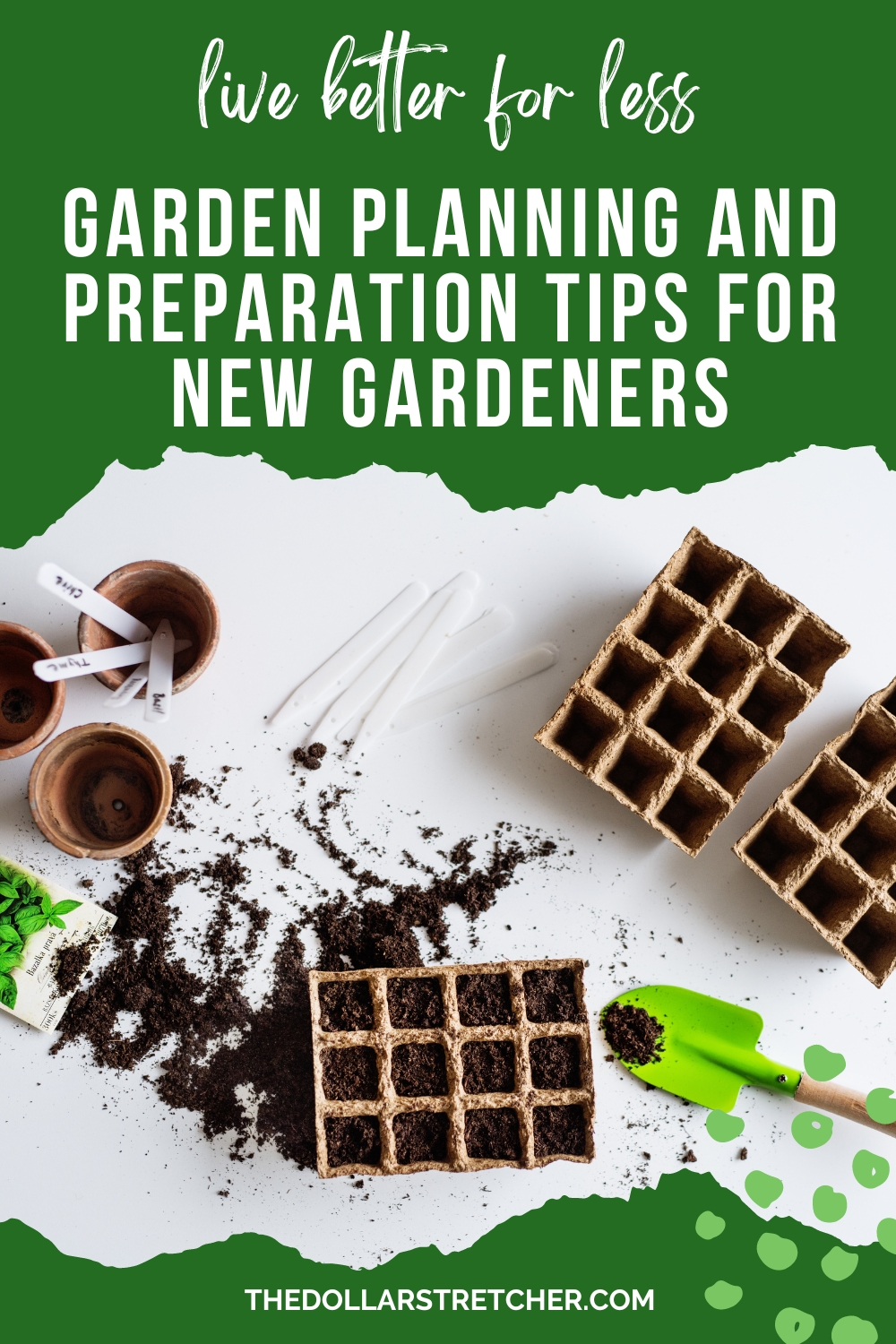New to Gardening? Get Started Now Planning and Prepping
by Miranda Jackson

Although many folks are still dealing with a significant amount of winter weather, spring is just around the corner. And it is the ideal time to begin planning and preparing your garden. The steps you take now will save you time come spring and summer and help ensure you reap a plentiful garden bounty for your efforts.
Start Indoors With Your Garden Preparation
Don’t worry if it is still chilly outside or that snow may still be covering your garden beds. You can do some of your gardening prep indoors.
Plan What You Will Grow
Unless you are a seasoned gardener, you’ll likely need to do a bit of homework to determine what grows well in your area. You can easily research gardening zones online to help decide what and when to plant and harvest.
If you are new to gardening and unsure what to grow, consider planting more expensive vegetables and fruits that can help reduce your food budget. Or grow large quantities of the fruits and veggies you buy most often.
And speaking of quantities, how much space do you have and will you need for your garden? Once you know what you’d like to plant, note how much space each type of plant requires to grow successfully. This information will help determine the location and size of your garden space.
Sign Up for Savings
Subscribe to get money-saving content by email that can help you stretch your dollars further.
Twice each week, you'll receive articles and tips that can help you free up and keep more of your hard-earned money, even on the tightest of budgets.
We respect your privacy. Unsubscribe at any time.
Plan Where Your Garden Will Grow
You may have space for one large garden bed or a few smaller beds, along with some containers. Get creative with all of your available space so you can plant as much as your space will allow, and you can reasonably care for.
Make sure you choose sunny locations that drain well. Neither standing water nor a lack of sunlight are conducive to a productive garden. Also, ensure you can easily get water to your planned garden spaces.
Once you have planned the what and the where of your garden, it is time to get your seeds and get planting!
Gather Your Seeds
You have several options for getting seeds. You can order seeds from an online gardening store or a seed catalog. Or you can buy them from a local garden center or nursery. If you know other gardeners, perhaps you can trade seeds. You can even buy seeds from other gardeners on sites such as Etsy or eBay.
When choosing seeds, you may want to stick to heirloom and perennials. Perennials are crops you plant just once but can harvest yearly. Not many North American fruits and vegetables are perennials, but asparagus, rhubarb and many types of berry bushes can provide you with more than one year’s produce.
Heirloom vegetables are a wise choice because you can save the seeds from this year’s heirloom vegetables for use in next year’s garden. And if you are a beginner gardener, heirloom vegetables (rather than hybrid vegetables) tend to produce in succession, meaning you don’t typically have to harvest the entire crop at once. This can help prevent the food waste that can occur with a crop that gives you an abundance of produce all at once.
Start Your Seeds
Once you have your seeds, some, if not all, can be started indoors while you wait for warmer temperatures outdoors. Most seed packets come with instructions on how to start and care for your seedlings until they are ready to go into the ground or a larger container.
And there is no need to spend much money on fancy seed trays and indoor greenhouses to start your seeds. You can find all kinds of creative yet practical ideas online for reusing household items to grow your seedlings. You can convert items such as newspapers, to-go containers and milk jugs into mini planters with little effort and no cost.
By the time you complete the indoor portion of your garden planning and preparation and get those little seedlings started, it will likely be warm enough to begin some of your outdoor preparation.
Start These Outdoor Garden Preparation Tasks
By the time you complete the indoor portion of your garden planning and preparation and get those little seedlings started, it will likely be warm enough to begin some of your outdoor preparation.
Make Sure All Garden Tools Are Ready for Planting
If you had a garden previously, you hopefully cleaned your tools thoroughly before putting them away for the winter. It is time to pull them out and see if you need to replace or repair any.
If you are a first-time gardener, start collecting the tools you’ll need so you’re ready to go when it is time to start planting your seedlings into your garden spaces. At a minimum, you’ll need to have a hoe or shovel and a rake on hand to start clearing your garden beds and preparing the soil.
Get Down to the Bare Soil in Your Garden Beds
You’ll want to remove mulch and any debris from your garden beds. Use a hoe or other tool to break up the top four to eight inches of soil and then rake the surface as flat as possible. You may need to dampen the soil to break it up effectively. Remove any rocks and other debris and break up any clumps of hard soil.
Prepare Your Soil
Before you worry about any weeds sprouting in your garden bed, you may want to add a layer of compost and turn it into the top few inches of your soil to add nutrients and improve your soil structure. Be sure to rake the soil flat again after turning the compost into the soil.
You can then use a chemical or non-chemical method to remove all weeds from your garden bed. After you treat the space for weeds, you may also want to add a layer of compost over the soil to retain moisture and keep down future weed growth.
Set Up Garden Containers
If you will be using any containers for your garden, you can set these up beforehand. Unless you buy garden soil ready for planting, you may need to add compost or other materials to your container soil to ensure the soil has enough nutrients to support the growth of your plants.
Once you complete all of these prep steps, it will likely be about time to transplant your seedlings into your garden beds or containers.
If you are a first-time gardener, make sure you’ve taken the time to learn about how to care for your garden and, more specifically, the produce or plants you’ve chosen to grow. You’ll want to read up on weed and pest control, fertilization and watering guidelines. The last thing you want is to have all your hard work and money wither and die or get eaten by pests. Proper planning and preparation can help ensure your gardening success, and there is no better time to start than now.
Reviewed March 2024
Popular Articles

On After50Finances.com
- 9 Things You Need to Do Before You Retire
- You Didn’t Save Enough for Retirement and You’re 55+
- When Empty Nesters Reorganize and Declutter Their Home
- Reinventing Your Career in Your 50s or 60s
- What Mature Homeowners Should Know about Reverse Mortgages
- 2 Reasons to Collect Social Security Benefits As Soon As Possible

